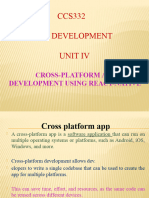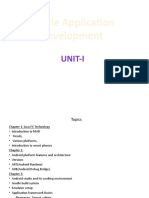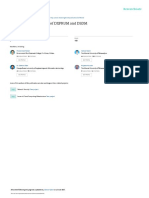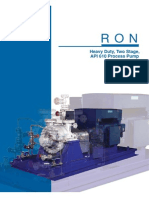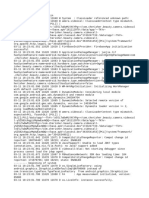0% found this document useful (0 votes)
22 views4 pagesMobile App Development Analysis Updated
The document analyzes mobile app development approaches for various business needs, recommending Native apps for logistics due to their performance and hardware integration. It compares Cross-Platform frameworks like Flutter, Xamarin, and React Native, highlighting their features and limitations, and discusses the importance of maintainability and UI/UX in app development. Additionally, it outlines the benefits of Cross-Platform development, the role of Apache Cordova, and scenarios where Native apps are preferable, concluding with recommendations for an online shopping app using Cross-Platform frameworks.
Uploaded by
sampath MCopyright
© © All Rights Reserved
We take content rights seriously. If you suspect this is your content, claim it here.
Available Formats
Download as PDF, TXT or read online on Scribd
0% found this document useful (0 votes)
22 views4 pagesMobile App Development Analysis Updated
The document analyzes mobile app development approaches for various business needs, recommending Native apps for logistics due to their performance and hardware integration. It compares Cross-Platform frameworks like Flutter, Xamarin, and React Native, highlighting their features and limitations, and discusses the importance of maintainability and UI/UX in app development. Additionally, it outlines the benefits of Cross-Platform development, the role of Apache Cordova, and scenarios where Native apps are preferable, concluding with recommendations for an online shopping app using Cross-Platform frameworks.
Uploaded by
sampath MCopyright
© © All Rights Reserved
We take content rights seriously. If you suspect this is your content, claim it here.
Available Formats
Download as PDF, TXT or read online on Scribd
/ 4




























